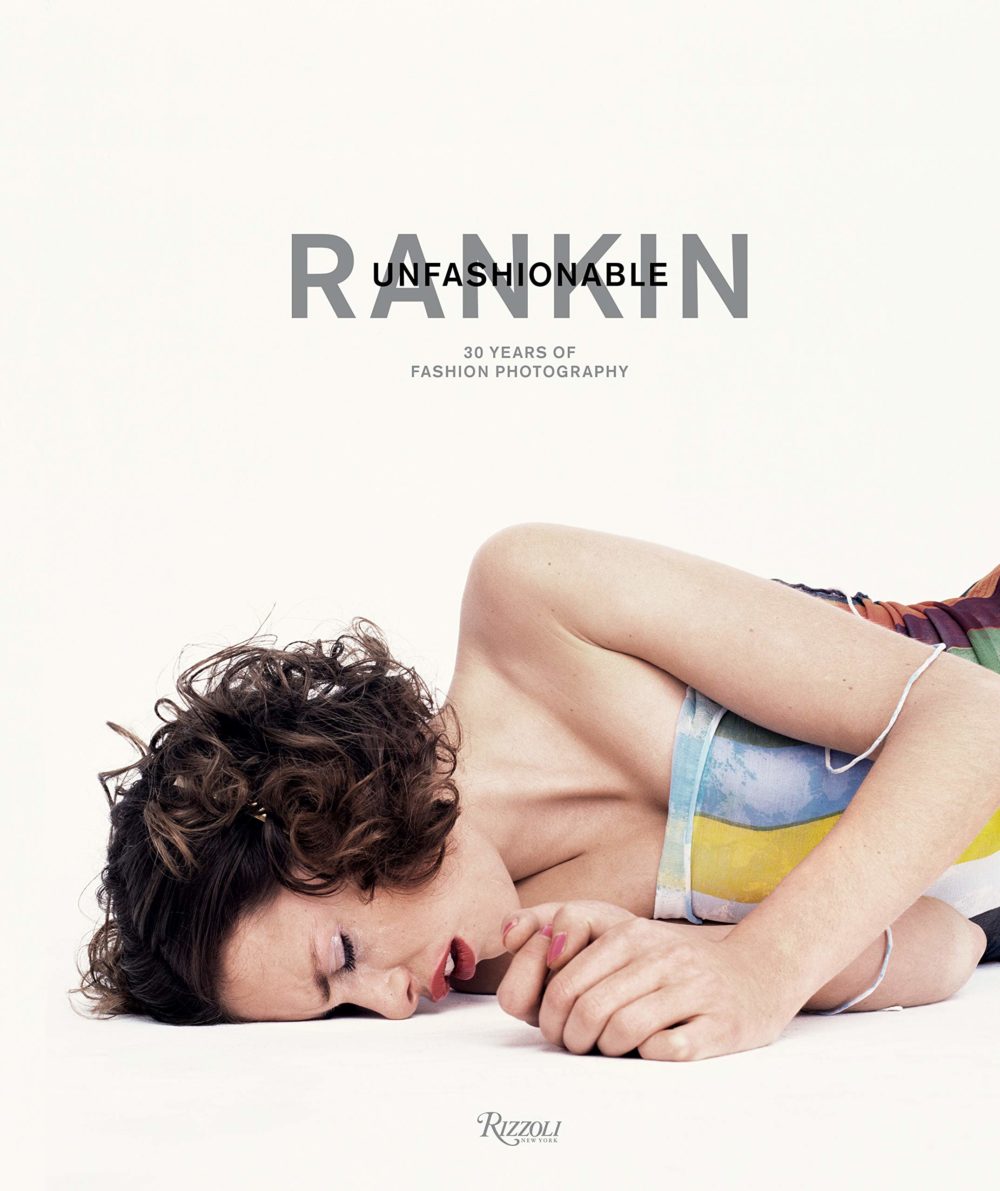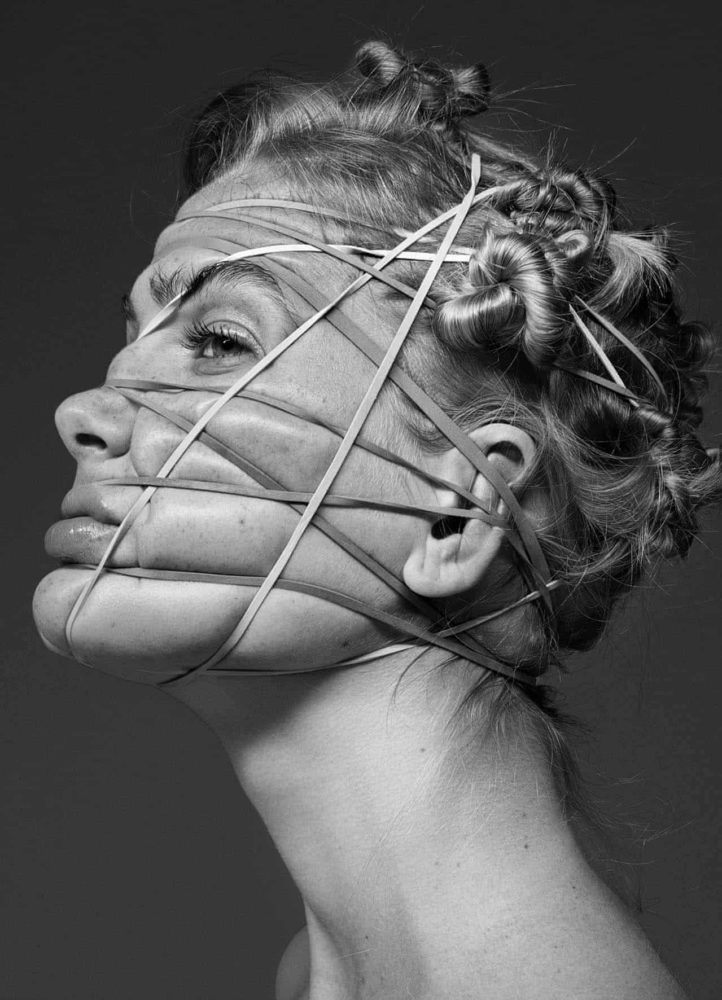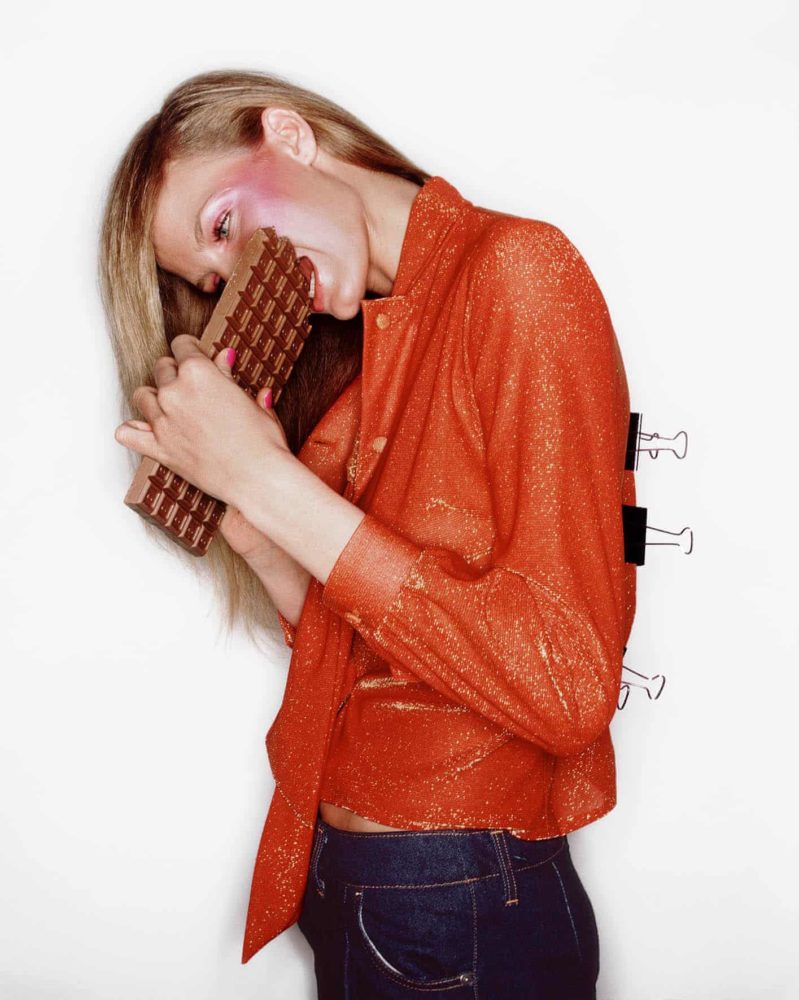John Rankin Waddell was born in Glasgow in 1966, but grew up in St Albans, Hertfordshire. If, like us, you’ll be surprised to hear that he briefly studied accountancy at the Brighton Polytechnic Institute. Soon realising that his interests and talents lay elsewhere, Rankin moved to Barnfield College in Luton to study photography.

Rankin: Unfashionable is presented in reverse chronology, starting with his most recent projects and current magazine Hunger TV. The book then works its way through to his early portraiture in the late 1980s, and the founding of Dazed & Confused and AnOther Magazine with Jefferson Hack.
Tapping into the spirit of the era, Rankin’s early photographic approach was playful and experimental whilst remaining intimate. Early Dazed editorials show this, such as his Weep (1994), Highly Flammable (1997) and one of Rankin’s favourite Dazed covers Spray Paint Kate (1998). The concept was to use Kate Moss as a blank canvas and to spray paint over her, transforming her body into a piece of art in itself.
Intricate details of his work are further revealed through interviews with his collaborators and muses including Jefferson Hack, Katie Grand, Andrew Gallimore, and Kate Moss, all of whom have been influential figures in his career. The interviews are supplemented with contact sheets, outtakes, and film stills providing an exciting insight into Rankin’s creative process and some of his most memorable work.
Later, while at the London School of Printing, he met the Uraguayan photographer Jefferson Hack. Upon graduation, they founded Dazed and Confused, a magazine covering fashion, music, film, art and literature. The publication has also supported social issues, and encourages debate, as in the Fashion-Able issue of 1998, questioning perceptions of beauty and disability, and 2004’s South Africa edition, which examined both the post-apartheid era, and the AIDS crisis in Africa. Rankin has also donated his own time to the publicity campaigns What’s It Going to Take, and Valentine’s Day, for the Women’s Aid charity.
With its founders willing to experiment and take risks, the monthly magazine developed a cult following, setting trends and providing a platform for young writers, designers, photographers and stylists. A Dazed Film and TV company followed in 1999, and in 2011, the Dazed Live festival brought music to East London. Rankin has also launched other periodicals.
In the last few years, Rankin has added television work to his portfolio. In BBC4’s 1999 documentary, Seven Photographs that Changed Fashion, he paid tribute to Cecil Beaton, Helmut Newton and five others, interviewing photographers, models and assistants, and using contemporaries like Heidi Klum, Erin O’Connor and his wife Tuuli Shipster. He took part in the reality TV show Britain’s Missing Top Model, where eight young women with disabilities competed for a modelling contract. Part of the prize was a shoot with Rankin, and he still works regularly with the winner of the second series, Lianne Fowler. He was also a guest judge for Germany’s Next Top Model. Other projects were South Africa in Pictures, and Jamie’s Dream School.
Over the last 30 years Rankin Waddell has been at the forefront of fashion photography, from shaping the aesthetics of the 90s and 00s, to dominating contemporary fashion editorials, cinematography, graphic design, and music videos for artists such as Kelis and Azealia Banks. To coincide with his 30th year of shooting, the photographer has published the first retrospective of his work titled Rankin: Unfashionable: 30 Years of Fashion Photography.
Celebrating an extraordinary life in fashion photography, the book provides a behind-the-scenes look at the icon’s expansive work.










